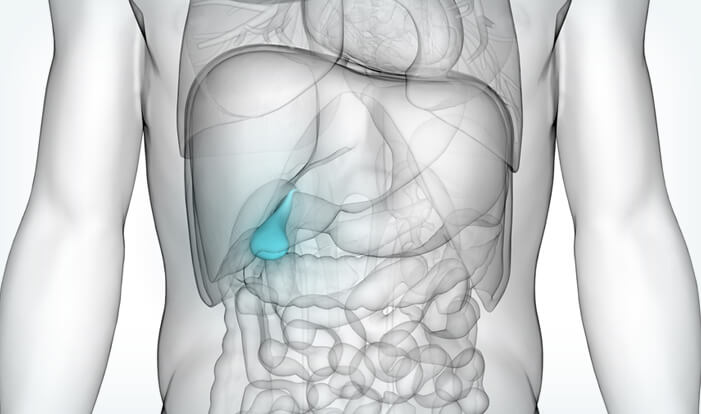Conditions We Treat Gallstones & Gallbladder Disease
Overview
The gallbladder stores and dispenses bile, a fluid that helps the body digest fats from food. The liver produces bile, which then flows through the gallbladder and into the intestine via the common bile duct.
Gallstones are stone-like deposits that form in the gallbladder or bile duct. They range in size from a grain of sand to a ping pong ball. Gallstones may go unnoticed indefinitely, but if they are numerous or large, they can cause pain when the patient eats fatty food or when they prevent the flow of bile. Gallstones are the most prevalent form of gallbladder disease.

Symptoms

Many people have gallstones for a long time with no issues (these are called “silent stones”). Others eventually have what is termed a “gallbladder attack” and will experience one or more symptoms including:
- Sudden and intense upper right-side abdominal pain (“biliary colic”)
- Sudden and intense pain in the center of the abdomen
- Pain between the shoulder blades or on the right shoulder
- Nausea or vomiting
- Fever with chills
- Bloating, heartburn, and gas

Causes
Research shows that gallstones can occur when the gallbladder does not empty properly, as well as when bile contains too much cholesterol, too much bilirubin, or minimal bile salts.

Diagnosis
Doctors have a number of gallstone testing options at their disposal. The first step will be a physical examination to note any other related symptoms. If gallstones are suspected, an abdominal ultrasound can provide helpful images that show whether stones have developed, as well as offer insight into other possible gallbladder problems. If more information is needed to make a definitive diagnosis, other more specialized scans and blood tests can provide clarity.

Treatment Options
The most common gallstone treatment for symptomatic patients is surgery to remove the gallbladder (called a cholecystectomy). Luckily, the body does not need a gallbladder to digest food. The bile created in the liver will flow directly to the intestine instead of passing through the gallbladder first.
The vast majority of gallbladder removal surgeries are performed laparoscopically or robotically, which is considered minimally invasive and results in less pain and a shorter recovery time than traditional open surgery.
Dr. Uecker has vast experience performing gallbladder surgeries and will advise which surgical option will get each patient back up and running normally as soon as possible.
